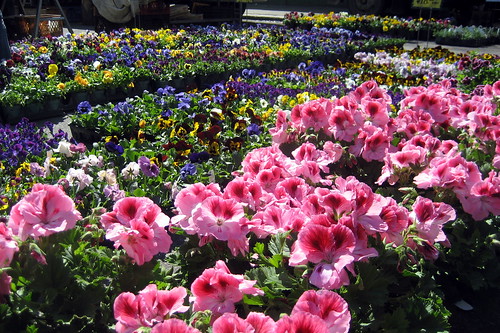DIY: Craft Fair Table Display
DIY: Craft Fair Table Display
This summer I decided to make a table display that had shelves for my craft items to sit on, and that could fit inside the largest luggage allowed by airlines without penalty. My other requirements were that they would make use of height, since I could be selling from a 4' table space, be clamped to the table to withstand wind, and to be made from materials I already had around the house. I have gone through so many different displays and selling so many different kinds of crafts, that I didn't want to spend any more money on my next wacky idea. And since we have been over twenty years in our house, there were a lot of odds and ends that I could use; much of the wood came from a torn down tree-house or remnants from fixing up the old garage. For this job I needed a table saw, a miter saw, a sander, a drill press, and cordless drills; I had plenty of screws and nails from previous projects, and all of these things I had bought previously. I don't come from a handy family, and often I don't know the names of things I need or use. Thanks to YouTube and HGTV, I plunge ahead into my very amateur woodworking adventures.
I plotted out the size after measuring my large luggage case, and decided it could be 27" high and 20" wide, with removable leg stands for clamping to the table. There would be three shelves, and the topmost rung would hold other beads/finials/box toppers. When you build your own display, you can design it to show off exactly what you make. For example, I have another display from re-used materials for jewelry, and for that I have rungs that are just right for hanging 16" necklaces on one shelf and 18" necklaces on the one below.
Old wood that have been in the yard for 17 years. Re-Use! Holes and old paint just add interest!
Cutting up all the pieces. And all my tools are cheap - I'm not making fine furniture, after all.
Making the boxes for the leg stands
The assembled leg stand
Adding rims to the upper shelves
Drilling holes on the top rung. I will put cut pieces of brass wire to put in them to hold my toppers.
Attaching the shelves to the standing legs; because the shelves will fold flat, a strip of wood on the back will keep it in place when folded out, and so the shelf back hangs a little farther out than the leg.
The shelves are attached with screws or glass headed screws (that I'd made for an earlier display - one that failed to work as planned!)
I measured the shelves to open to 90 degrees from the legs
And added stoppers underneath the shelves to keep them in place when in use
A wooden strip across the back also keeps the shelf in place and keeps things from falling off.
It works! I decided I didn't need any rims yet for the lowest shelf. I may put something there later. The two top shelves hold very light objects, so they can be on the thin side.
I decided to paint the shelves as the different kinds of wood was distracting from my boxes. Just with gesso I already had in stock. Note - sometimes I used my glass beads as shelf stoppers!
The legs were wobbly in the leg stands. Amateur woodworker me had measured incorrectly and left too much room in them! But I wanted to be able to make each display moveable on its own anyway, so I lampworked glass fins onto some wood screws, drilled holes into the backs of the leg stands, and used the finned screws to keep the legs in place and steady. Fins are better than round knobs - they give you a better grip for turning.
The screws dig into the legs of the display and all are soundly but not permanently attached. Yay!
All folded up. The two displays weigh about 15 pounds together. Not a light weight display, but that was secondary to my requirements.
The finished display stands
What the display will look like when it is in use.
Unattached box toppers can be displayed on the very top rung by putting brass wires in the pre-drilled holes. This is also an effective way to hang necklaces and jewelry for display.
Post by Jody Lee www.astudiobythsea.etsy.com www.astudiobythsea.com
















































